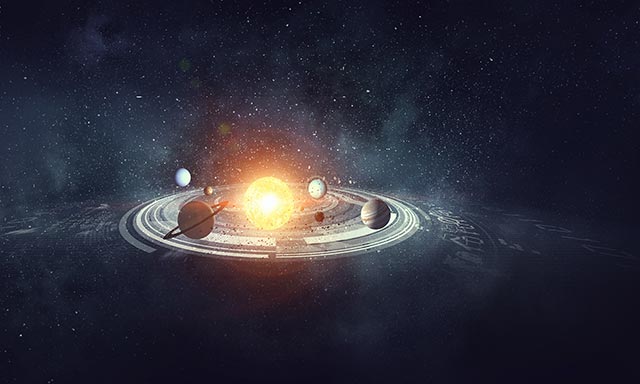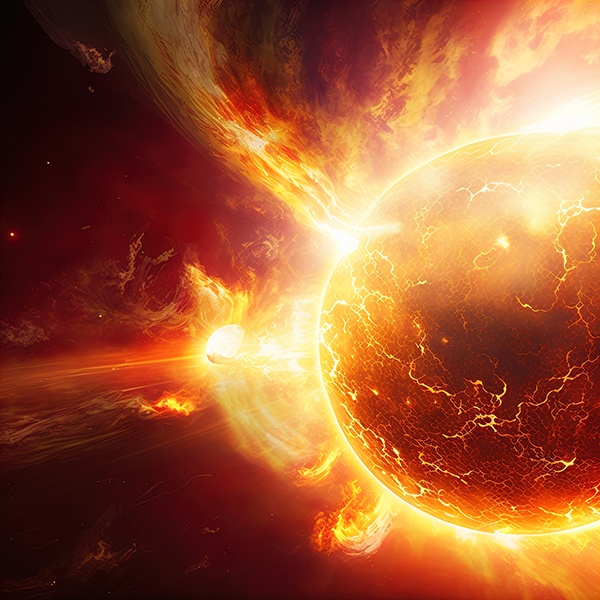
Scientists detect exoplanets by analyzing light from the planets themselves or their stars. This method led to the discovery of thousands of worlds within the Milky Way, but none beyond the galaxy.
That could change, suggests a recent study, with the use of gravitational waves – invisible ripples in space and time that travel at the speed of light. These waves could get through the obstacles that ordinarily hinder light, which makes them prime targets for detecting extragalactic worlds.
Although gravitational waves are already too weak once they pass through Earth, recent advances in technology allow scientists to better detect gravitational waves. In turn, these technologies have the potential to spot pairs of white dwarfs and the exoplanets orbiting them.
"Thanks to gravitational waves, we may finally be able to observe such objects far away from the solar neighborhood," said co-author Camilla Danielski of the University College London. The findings of the study are published in the International Journal of Modern Physics.
Gravitational waves and how they are detected
In 1916, Albert Einstein predicted the existence of gravitational waves in his theory of general relativity. He posited that when two bodies such as planets and stars orbit each other, they create a kind of movement that causes ripples in space and time. These ripples called gravitational waves spread out like ripples in a pond and squeeze and stretch anything in their path.
Only in 2015, however, would scientists uncover the first direct evidence for gravitational waves. Scientists used the Laser Interferometer Gravitational-Wave Observatory (LIGO), which is made up of two observatories: one located in Hanford, Washington, and the other in Livingston, Louisiana. Through these observatories, LIGO senses the distortions caused by gravitational waves as they ripple through matter.
Each observatory is composed of an L-shaped detector, whose legs are equally 2.5 miles long and contain laser beams within them. When gravitational waves ripple through, they will distort the legs but keep the light virtually unchanged. By measuring how long it took for the laser beams to get to one end of the L-shaped detector to the other, scientists can detect the presence of gravitational waves.
Furthermore, the existence of two observatories separated by distance can help scientists determine where the ripples came from. Gravitational waves will pass through one observatory first before the other; by measuring the arrival time, scientists can deduce the origin of the gravitational waves. The arrival time can be as much as 10 milliseconds, which is still very small, but such a minuscule measurement is precisely what LIGO was designed for.
The European Space Agency is currently developing a space-based observatory, the Laser Interferometer Space Antenna (LISA), which is bound for a 2034 launch. LISA can better detect space-time ripples, including those created by a pair of white dwarfs — cool, dim, Earth-size cores of dead stars.
Detecting extragalactic planets
In the current study, the researchers concentrated on white dwarf pairings, particularly in the Large Magellanic Cloud, a satellite galaxy close to Milky Way.
A pair of white dwarfs means the stars are orbiting each other, triggering ripples in the space-time fabric. When two white dwarfs are close enough to merge within thousands of years, they could generate a continuous stream of gravitational waves. By monitoring these streams, LISA could detect as much as a few hundred pairs of white dwarfs and, in turn, the exoplanets in their orbit.
According to the researchers, LISA could spot an exoplanet 13 times Jupiter's mass after four years of observation if a pair of white dwarfs have the following characteristics: The white dwarfs have a combined mass equal to half of the Sun's and they orbit each other at a distance about one-thousandth of Mercury's distance from the Sun. After 10 years of monitoring, the team projected that LISA would certainly spot such a massive exoplanet. (Related: Nearby "super-Earth" exoplanet could support life, suggest scientists.)
The team noted that many questions remain unanswered regarding the exoplanets orbiting a pair of white dwarfs; for one, it is uncertain how they formed and evolved. Future research could look into the exoplanets that formed before and after the stars became white dwarfs.
Scientists, on the other hand, could turn to gravitational waves in answering these questions.
Cosmic.news has more on space research.
Sources include:
Please contact us for more information.





















